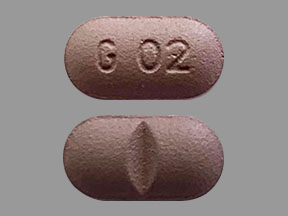Colchicine Disease Interactions
There are 7 disease interactions with colchicine.
- Bone marrow suppression
- Cardiac dysfunction
- DIC
- Electrolyte disturbances
- Liver disease
- Renal dysfunction
- Rhabdomyolysis
Colchicine (applies to colchicine) bone marrow suppression
Major Potential Hazard, High plausibility. Applicable conditions: Bone Marrow Depression/Low Blood Counts
The use of colchicine should be used with caution in patients with bone marrow suppression. Patients on long term therapy may require periodic blood counts.
Colchicine (applies to colchicine) cardiac dysfunction
Major Potential Hazard, Moderate plausibility. Applicable conditions: Cardiovascular Disease
The use of colchicine should be used with caution in patients with cardiac dysfunction. The possibility of cumulative effects of colchicine is increased in these patients.
Colchicine (applies to colchicine) DIC
Major Potential Hazard, High plausibility. Applicable conditions: Disseminated Intravascular Coagulation
Colchicine should be used with caution in patients with disseminated intravascular coagulation. Debilitated patients have an increased risk of developing colchicine toxicity.
Colchicine (applies to colchicine) electrolyte disturbances
Major Potential Hazard, High plausibility. Applicable conditions: Hyponatremia, Hypokalemia, Electrolyte Abnormalities
Electrolyte imbalances including hypokalemia and hyponatremia may worsen in patients taking colchicine as the most common adverse effects of colchicine include nausea and vomiting. Therapy with colchicine should be administered with caution in patients with electrolyte imbalances. Monitoring serum electrolytes is recommended in these patients.
Colchicine (applies to colchicine) liver disease
Major Potential Hazard, High plausibility.
The clearance of colchicine may be significantly reduced and plasma half-life prolonged in patients with chronic hepatic impairment compared to healthy subject. No pharmacokinetic data are available for patients with severe hepatic impairment (Child-Pugh C). Caution is recommended when prescribing colchicine to these patients.
Colchicine (applies to colchicine) renal dysfunction
Major Potential Hazard, High plausibility.
Colchicine is significantly excreted in urine in healthy subjects. Clearance of colchicine is decreased in patients with impaired renal function. Colchicine dosing must be individualized according to the patient's renal function. Caution must be exercised when colchicine therapy is instituted in these patients. Monitoring creatinine function is recommended in patients on long term therapy.
Colchicine (applies to colchicine) rhabdomyolysis
Moderate Potential Hazard, Moderate plausibility. Applicable conditions: Renal Dysfunction, Liver Disease
Colchicine-induced neuromuscular toxicity and rhabdomyolysis have been reported with chronic treatment in therapeutic doses. Patients with renal dysfunction and elderly patients, even those with normal renal and hepatic function, are at increased risk. Caution must be exercised when colchicine therapy is instituted in these patients.
Switch to professional interaction data
Colchicine drug interactions
There are 312 drug interactions with colchicine.
Colchicine alcohol/food interactions
There is 1 alcohol/food interaction with colchicine.
More about colchicine
- colchicine consumer information
- Check interactions
- Compare alternatives
- Pricing & coupons
- Reviews (106)
- Drug images
- Side effects
- Dosage information
- Patient tips
- During pregnancy
- Drug class: antigout agents
- Breastfeeding
- En español
Related treatment guides
Drug Interaction Classification
| Highly clinically significant. Avoid combinations; the risk of the interaction outweighs the benefit. | |
| Moderately clinically significant. Usually avoid combinations; use it only under special circumstances. | |
| Minimally clinically significant. Minimize risk; assess risk and consider an alternative drug, take steps to circumvent the interaction risk and/or institute a monitoring plan. | |
| No interaction information available. |
See also:
Further information
Always consult your healthcare provider to ensure the information displayed on this page applies to your personal circumstances.


